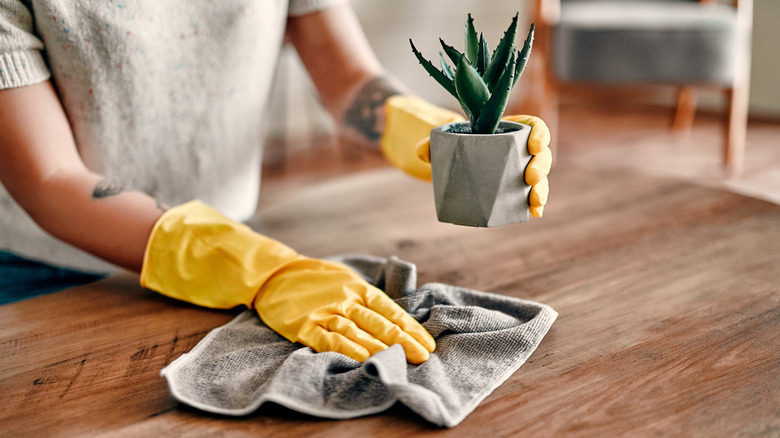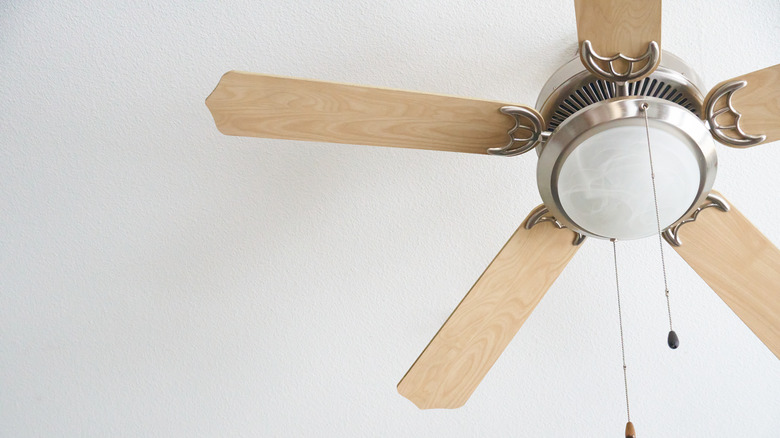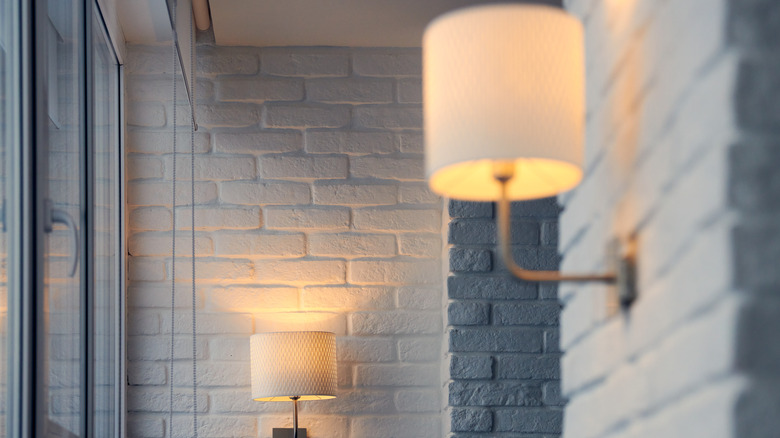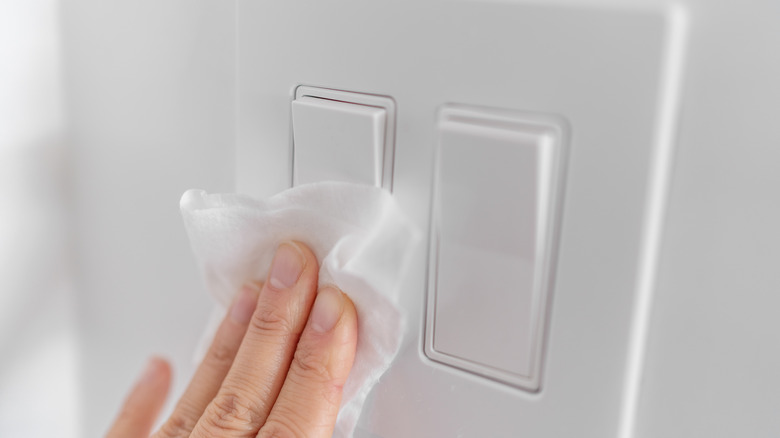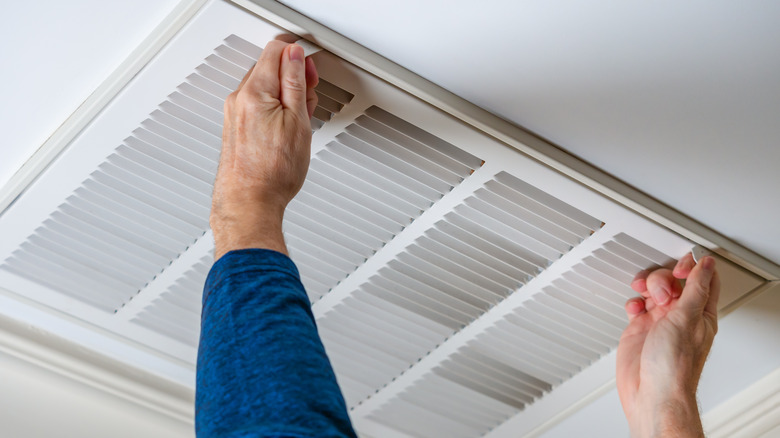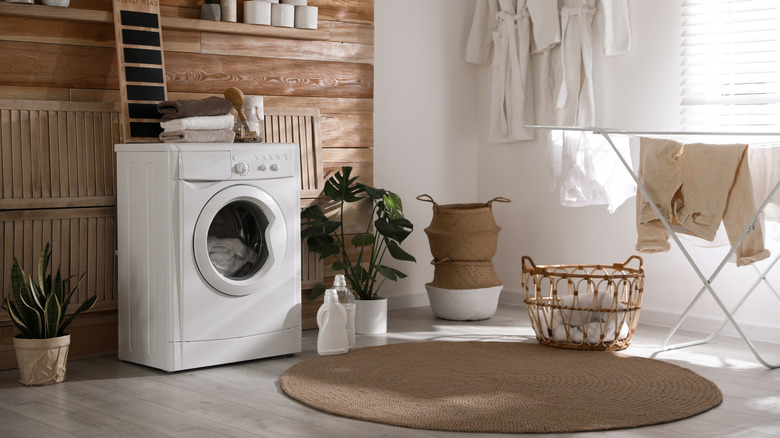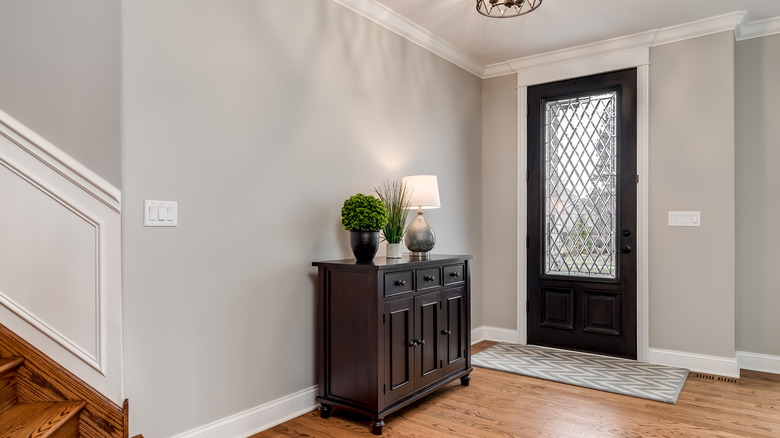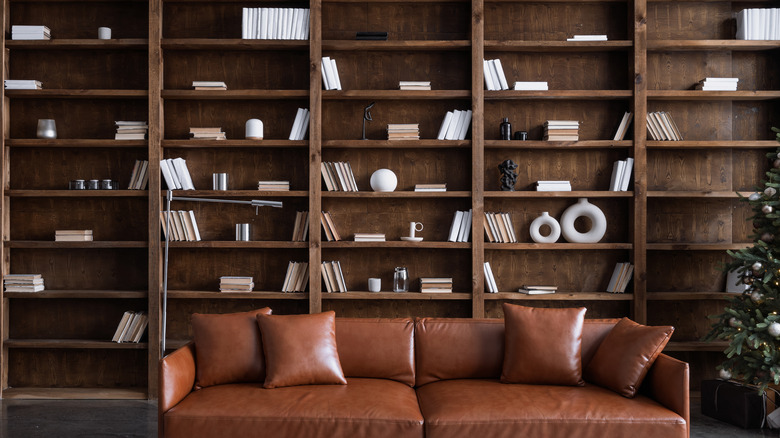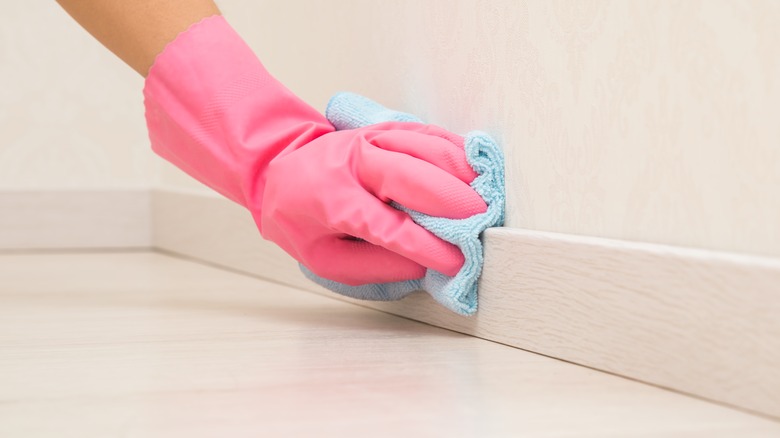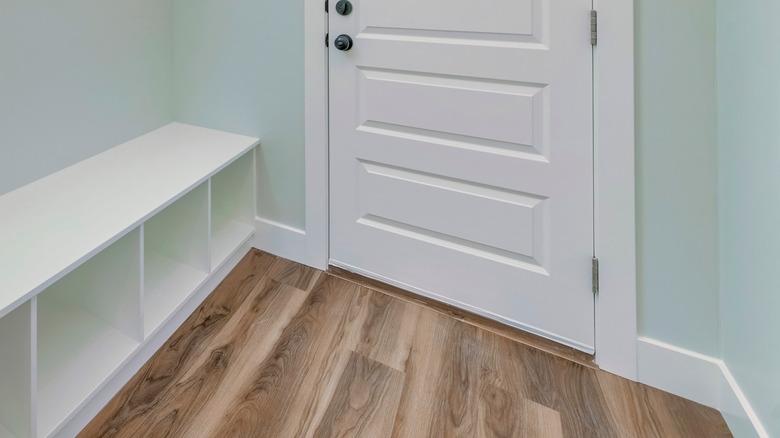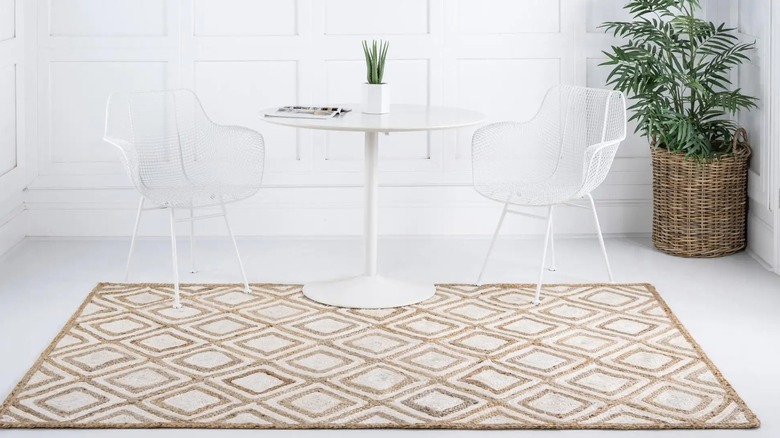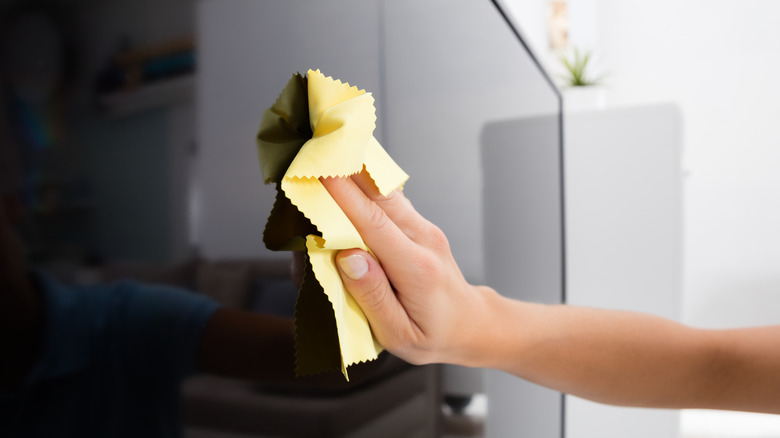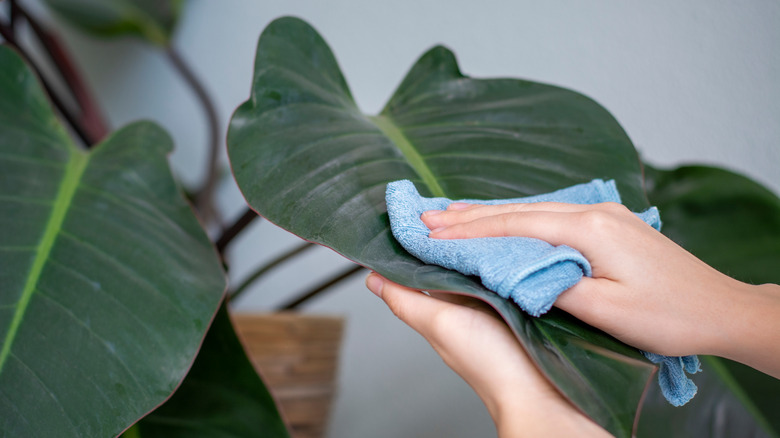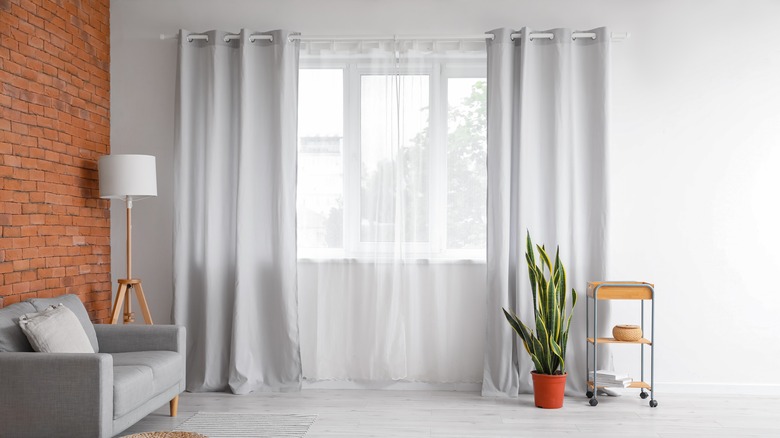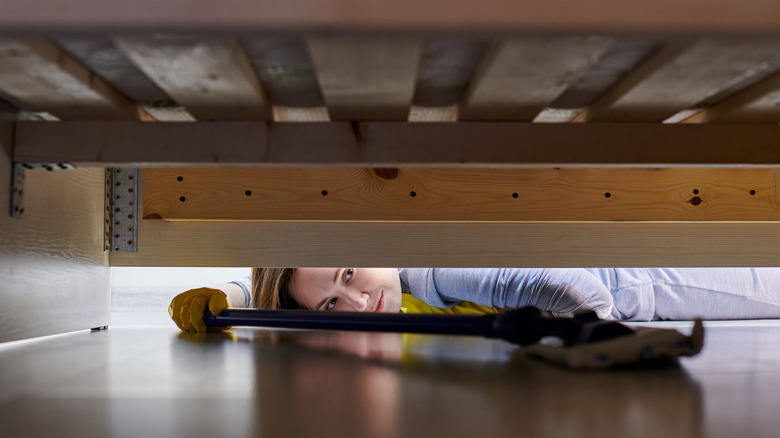14 Places In Your Home You Are Forgetting To Dust
Most of us have one household chore we particularly dislike. Unfortunately, we're betting that for many, that chore would be dusting, likely because there never seems to be an end to the amount of dust that can — and does — accumulate in our homes.
Per The Washington Post, we can thank ourselves and our environment for all that dust. Some of it comes from our skin, hair, and clothing; some comes from the outside world that we can't keep out — including soil and pollen. And whether we like it or not, ignoring dust isn't going to make it go away. In fact, it could actually make us sick because it triggers allergies with symptoms that include coughing, sneezing, and red, irritated eyes, per Sparkle and Shine. And while we may be good at dusting, there may still be a few areas you're overlooking. This will likely explain why even a good, regular cleaning session may not be doing much to relieve your allergy symptoms.
Ceiling fans
Cleaning your ceiling fans is essential because their blades can pick up dust. This occurs mainly when the fan is idle, and once someone switches on the ceiling fan, the dust will go for a spin and spread around the entire room.
Light fixtures
If your room looks dimmer and smaller than usual, it's likely because your bulbs and light fixtures are covered in dust and grime.
Light switches
Hawk Hill warns that dust and grime can accumulate, not only on light switches but also in crevices around them. This will leave your switches looking grimy and dingy — and it could also make your home look older than it is.
Ceiling vents
Like ceiling fans, vent covers can attract and trap dust bunnies and may even take a profound toll on your HVAC system. Also, having dusty vents is bound to trigger allergies and other respiratory problems too!
Behind appliances
McCombs Supply Co. warns that dust can accumulate in areas you cannot see, including behind and underneath appliances like your refrigerator. Getting behind and underneath these areas is especially important since these spaces attract mold and insects like ants or cockroaches.
Door frames
We may open and close our doors regularly, but we hardly pay attention to the frames in which our doors are nestled. Therefore, dusting the tops of doors is vital to keep the area cobweb-free.
Cabinets
Cabinets are dust magnets no matter what part of your home they happen to be in. And because dust also attracts germs which can cause infections and respiratory diseases, it's essential to keep it from gathering in places where you least expect it.
Baseboards
Because baseboards are filled with grooves and crevices, they are particularly efficient at gathering dust. Going over your baseboards with a dryer sheet will not only help keep your wall looking spiffy, but it will also keep dust bunnies away too!
Corners
Gisela Gomez of Hospitality Staffing Solutions tells The Washington Post that it wouldn't be a stretch to describe room corners as among the dustiest spots in the house because they are good at attracting their share of dust bunnies. She advises attacking corners with a vacuum cleaner.
Underneath rugs
Carpets hold a large capacity of dust and grime, which will eventually make their way to the floor underneath. Even if it's out of sight, that dust will cause as much respiratory trouble as dust in open areas.
On top of electronics
Just because they are electronic devices doesn't mean they are impervious to dust. And once the dust settles — literally – Dust Commander warns you'd likely see a host of problems including overheating, moisture, and appliances that could end up being difficult to fix in the long run.
Plants
Like furniture, plants have the unfortunate habit of attracting dust. Getting rid of that filthy layer helps plants do what they need to, like making their food via photosynthesis or repelling creepy crawlies.
Window treatments
If your dusting routine doesn't begin with dusting your shutters, blinds, and curtains, it's time to change that. Gotcha Covered says window treatments can attract the same problematic allergens you might find outside — including dirt, dust, and pollen — and trap them in your home.
Under your bed
The area under your bed can trap everything from dust to hair, and even dead bugs. Once all this happens, the space beneath your sanctuary could also become ground zero for pathogens.
